
8 oxygenating aquatic plants for ponds or pools
The most beautiful and most effective for clear water
Contents
One of the first types of aquatic plants experts recommend adding to a pond or pool is an oxygenating plant.
Are oxygenating plants really useful? Yes — they are useful, even indispensable to a water feature if you want to create balance and thus achieve a healthy, biodiversity-rich medium.
But which to choose from the wide range available? Here is a selection of our favourites.
Oxygenating plants: what are they for?
Oxygenating plants are essential to provide… oxygen through photosynthesis.
This oxygen is necessary for small fauna that live there and do not return to surface to breathe but also and above all for bacteria!
This may seem surprising but water bacteria are useful: they break down organic waste so it can be taken up as minerals by plants. By feeding plants, they therefore limit accumulation of organic matter and thus help prevent siltation and make water clearer. But for that, they need oxygen
Moreover, oxygenating plants often show significant growth, which is perfect for effectively competing with algae.
Finally, these plants also provide shelter, egg-laying sites and even food for some animals that inhabit the pond or the basin.
Note that it is important to diversify oxygenating plants as these generally do not produce oxygen all year round. Some will be active in spring, others later in the season… but pond or basin need it all year round.
Read also
10 aquatic plants, submerged or floatingSpike water-milfoil, Myriophyllum spicatum
When it comes to oxygenating plants, myriophyllums (family Haloragaceae) are immediately mentioned. They are indeed plants of remarkable efficiency for oxygenating a pond or a pool. But… they are invasive and it is often necessary to intervene to limit their spread. One of them, Myriophyllum aquaticum or Brazilian water milfoil, is even banned from sale here because considered invasive and posing a danger to local flora and fauna. And although Myriophyllum spicatum is native to Eurasia, it is itself regarded as invasive in North America.
In fact, all myriophyllums can reproduce sexually and, above all, asexually via rootstocks and stem fragments. Add to that that they adapt to almost any conditions or almost, and you end up with a plant whose growth can sometimes be somewhat worrying. That said, let’s not be too hard on our spike myriophyllum because it has attractive semi-evergreen foliage, finely dissected and borne on long floating stems two to three metres long. In summer it bears charming small white flowers in a spike.
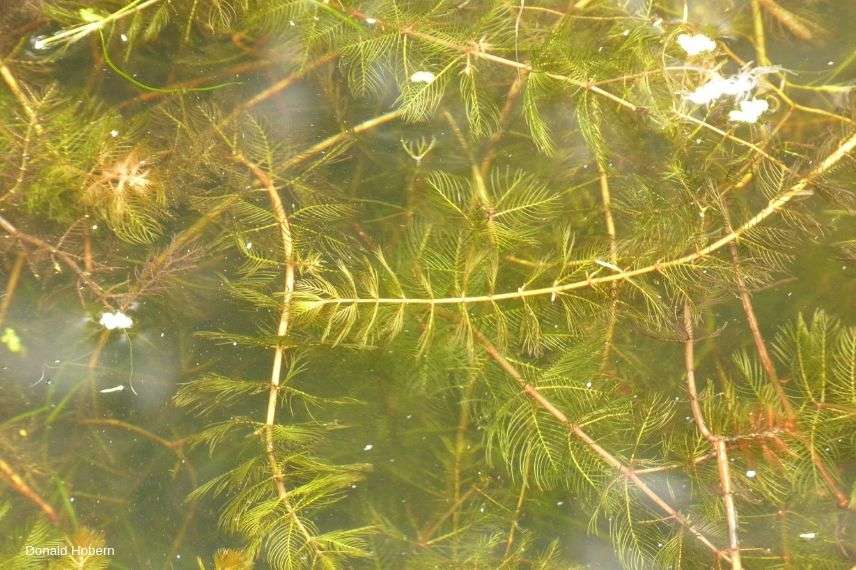
Myriophyllum spicatum
Discover other Aquatic plants
View all →Available in 0 sizes
Available in 1 sizes
Available in 2 sizes
Available in 3 sizes
Available in 1 sizes
Available in 1 sizes
Available in 1 sizes
Available in 1 sizes
Available in 1 sizes
Available in 1 sizes
Callitriche
Callitriches are aquatic plants of the family Plantaginaceae (formerly Callitrichaceae) that are difficult to distinguish from one another: very often, study of pollen grains must be carried out under a microscope for precise identification. Stems bearing small opposite leaves grow under water but, as soon as they reach the surface, they produce small, quite decorative rosettes of leaves. If water is shallow, as is the case in a pond or basin (under 1.50 m), the plant will spread and then limit its growth.
These plants appreciate a slight current, making them more effective at producing oxygen. In cold climate, during winter, callitriches may appear to disappear but a few tufts nevertheless persist to re-sprout more vigorously in spring.
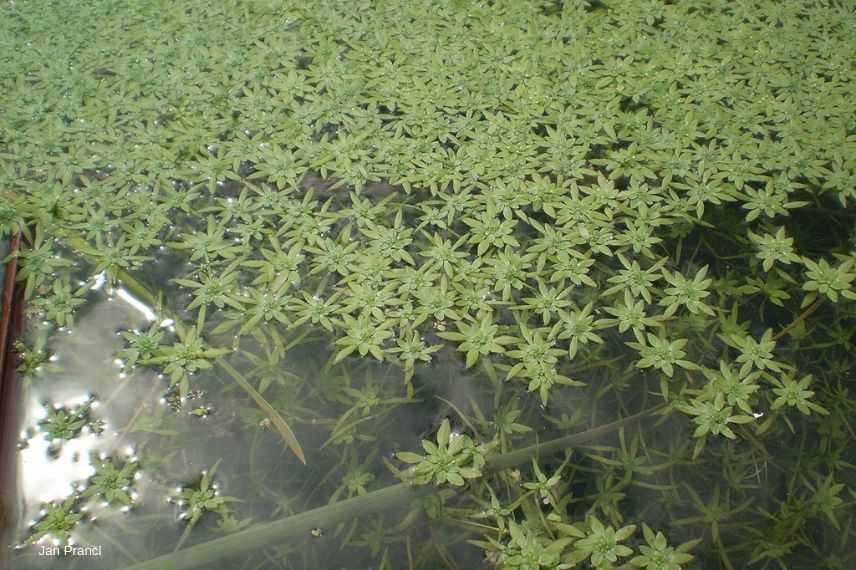
Callitriche cophocarpa
Submerged hornwort, Ceratophyllum demersum
Aquatic plant in family Ceratophyllaceae, Ceratophyllum demersum or submerged hornwort is an astonishing plant that anchors itself to the soil by leaves transformed into rhizoids. It is a versatile plant as it can live at temperatures between 10 and 30 °C, tolerates a pH between 6 and 9 and can reproduce sexually or asexually: a winter bud detaches in autumn and sinks to the bottom of the water to recreate a plant the following spring. It is a very fast-growing plant that should be kept in check regularly by removing some stems or clumps.
The submerged hornwort somewhat resembles a very bushy horsetail but with brittle stems; it favours slow-flowing or even stagnant watercourses and it floats thanks to oxygen bubbles trapped in its leaves which also serve as a refugium for many animals.
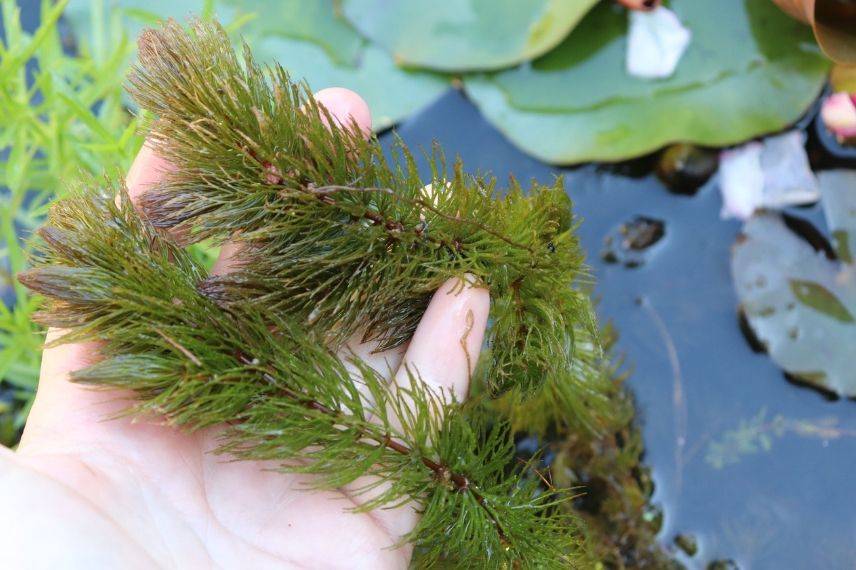
Ceratophyllum demersum
Pesse of water, Hippuris vulgaris
Hippuris vulgaris or mare’s tail is an aquatic perennial plant of family Plantaginaceae, very decorative but endangered in Europe in its natural habitat. It is a perennial with a horizontal rootstock whose stems, 20 to 50 cm high, are erect, cylindrical and hollow. When they emerge from water, stems resemble very decorative mini firs. Mare’s tail restarts growth of its leaves in spring and these die at first frosts. The plant then spends winter at bottom of water as rootstock.
Mare’s tail is an excellent oxygenating plant, which provides good shelter for wildlife. It is less invasive than most other plants of this category because it only proliferates via its rootstocks. On submerged parts there are many insects and other invertebrates but also fry or pollarded trees. Emergent parts serve as sites for dragonflies’ and damselflies’ moulting.
A nutrient-hungry plant, Hippuris also contributes to water purification by assimilating some excess nutrients such as nitrates and phosphates.
Potamogeton sp. or Potamot sp.
Potamotegon sp. of the Potamotegonaceae family represent about 90 species worldwide. One of the most common is renouée-leaved pondweed or Potamogeton polygonifolius, a native species particularly effective and hardy. It favours slightly acidic, nutrient-poor stagnant waters. Potamogeton is a perennial aquatic with a cylindrical stem, lanceolate submerged leaves but ovate floating leaves and summer flowering in compact spikes. This plant also provides good shelter for wildlife and fish. It reproduces very easily asexually because each small broken piece of stem can take root in the substrate at the bottom of the water.
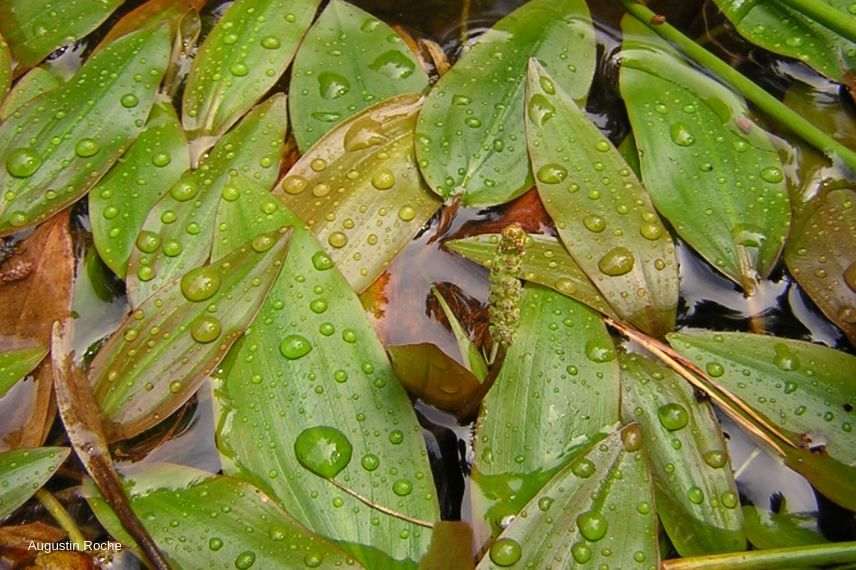
Potamogeton polygonifolius
Marsh hottonia, Hottonia palustris
Known by the poetic name “water millefeuille“, this charming aquatic perennial of the Primulaceae family favours shallow, still water in shade. A plant of woodland ponds, it occurs throughout France except along Mediterranean coast and in the south-east. Once fairly common, it is now an endangered species owing to loss of natural wetlands and eutrophication (increased levels of nitrates and phosphates). Its submerged leaves are very finely divided, while its lilac flowers with yellow centres emerge from the water on a tall flowering stem from May to June. If conditions suit it, it can rapidly colonise the entire water surface.

Hottonia palustris
Floating water-crowfoot, Ranunculus fluitans
Floating water-crowfoot, of family Ranunculaceae, is a charming perennial forming fairly dense tapetum on surface of water with a variable current. Present throughout France except Brittany and the southeast. An oxygenating river species, but perfectly suitable for use in pond or pool. Leaves are submerged and arranged in fine, very sturdy strips to resist current; they gather into brush-like tufts when emerging from water. White flowers, reminiscent of terrestrial buttercups, appear from May to August. With very rapid growth, requires occasional control by pulling up a few clumps to prevent complete overrun.

Ranunculus fluitans
Beware of invasive exotics!
There is much discussion about invasive alien species (IAS). Their study and appropriate treatment often need to be carried out on a case-by-case basis, but it must be acknowledged that those that cause most harm to natural mediums are exotic aquatic or semi-aquatic species. Fortunately, these plants are no longer sold commercially, so you should, in theory, no longer risk acquiring one for your pond or water feature. However, if you have any doubt here is the list of IAS for France.
- Subscribe!
- Contents
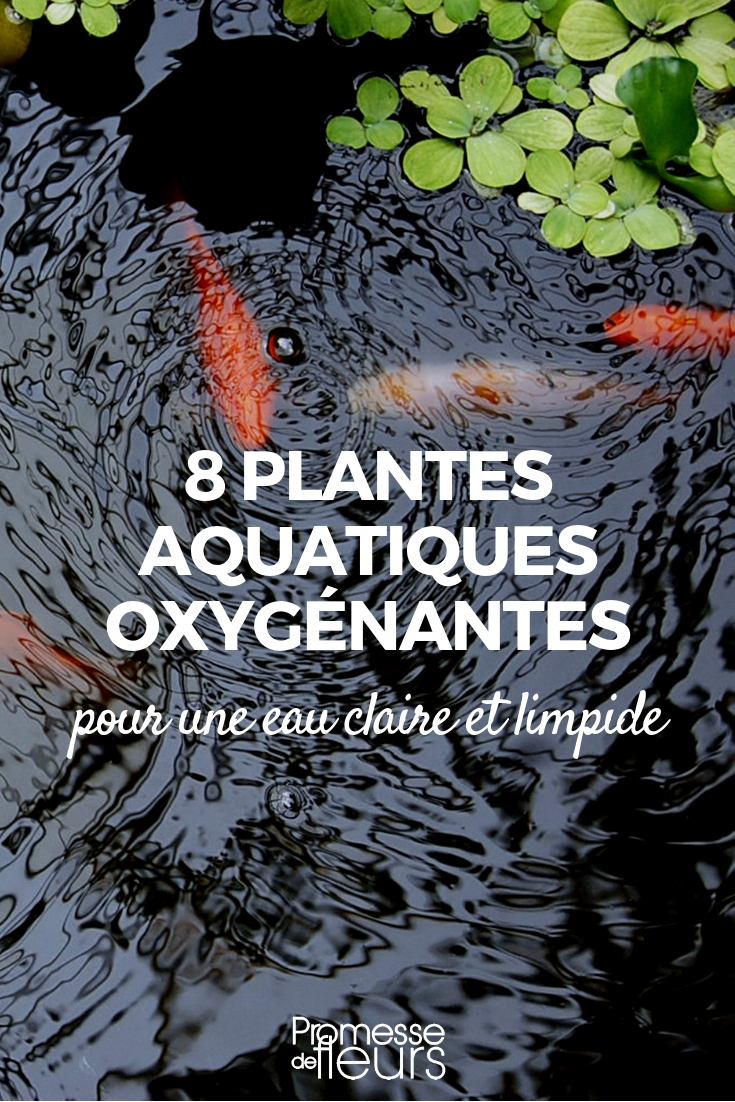































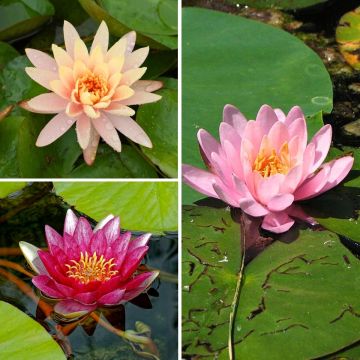
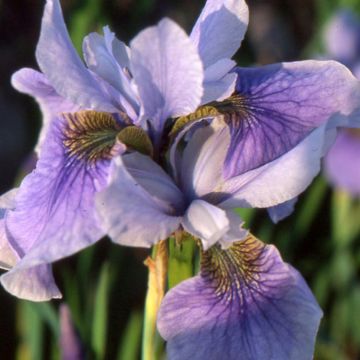
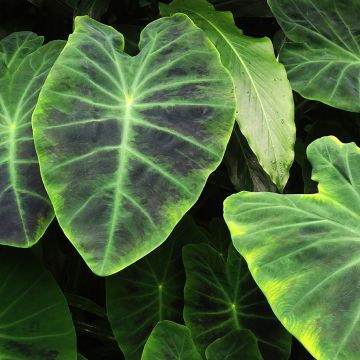
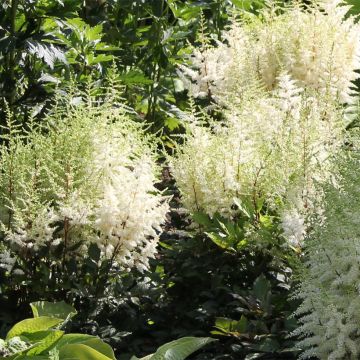
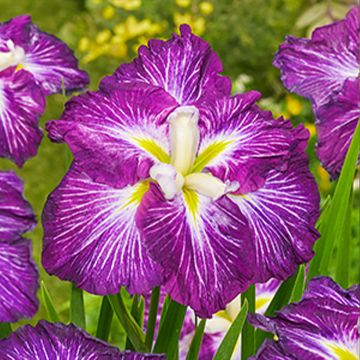

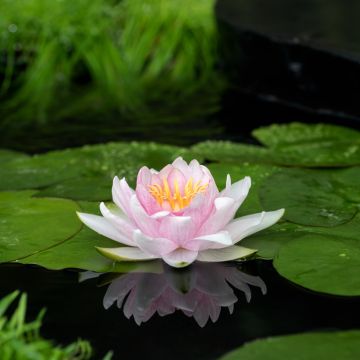
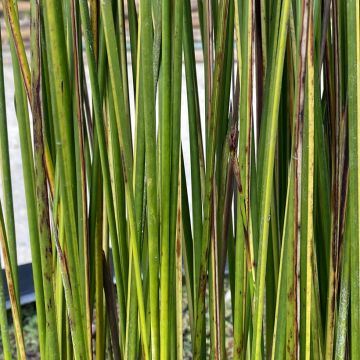
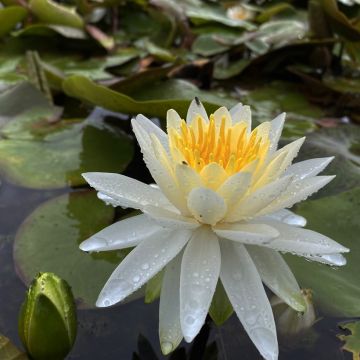
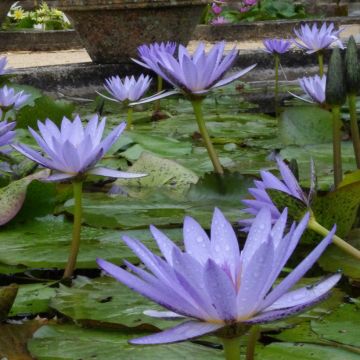
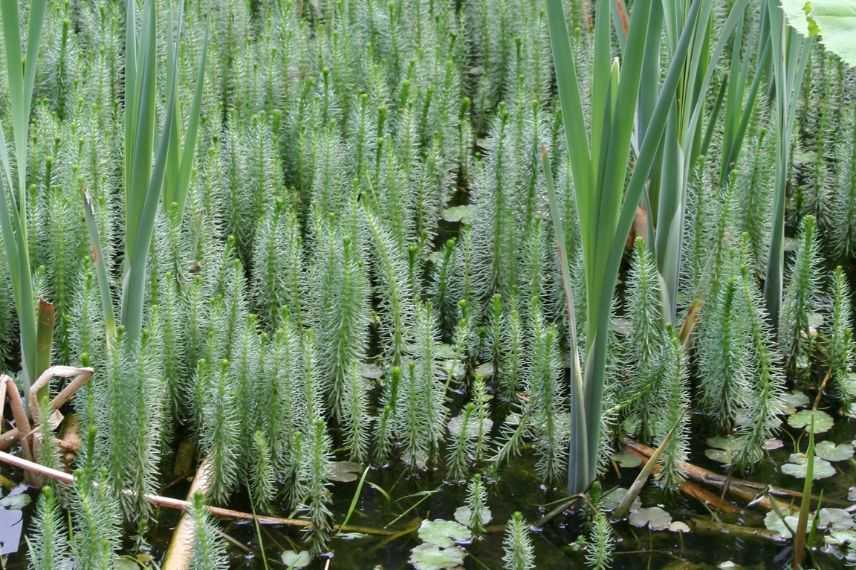
Comments